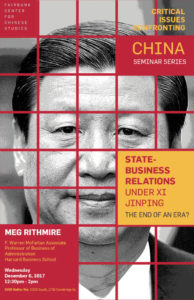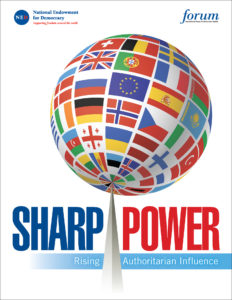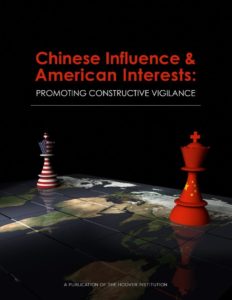Nove anos atrás, eu redigia um artigo, para um colóquio do qual participei em Madri, a convite de um amigo alemão ainda trabalhando na OCDE, em Paris, em meio a uma estada na China, para a Exposição Universal em Xangai, que revisava um outro artigo que eu havia preparado um ano antes, ao preparar-me para passar alguns meses naquela magnífica cidade chinesa:
2202. “Now, an Economic Cold War: Old Realities, New Prospects”, Shanghai, 13 outubro 2010, 4 p. Resumo largamente modificado do trabalho 2193, para publicação da Fundación Areces a propósito do simpósio com a OCDE sobre governança global. Enviada a Rainer Geiger. Publicada in FRA, Revista de Ciencias y Humanidades de la Fundación Ramón Areces; Monográfico: “Mas Allá de la Crisis: El Futuro del Sistema Multilatearal (Madrid: Fundación Ramón Areces, Diciembre 2010, p. 116-120). Postado no blog Diplomatizzando (23/01/2011; link: http://diplomatizzando.blogspot.com/2011/01/economic-cold-war-artigo-pra-publicado.html). Refeito, com ligeira ampliação, sob n. 2241 (“A Guerra Fria Econômica: um cenário de transição?”, 31.01.2011; in: Mundorama; link: http://www.mundorama.net/?p=7197). Relação de Publicados n. 1015.
Eis o artigo, apresentado sumariamente nesse simpósio de Madri, depois publicado nos anais do simpósio, e republicado em português, numa versão modificada, poucos meses depois (
http://www.mundorama.net/?p=7197).
Paulo Roberto de Almeida *
Old Realities
The geopolitical Cold War is definitely closed, it seems. Besides
“normal” political tensions and trade frictions between major powers, there are
no more totally opposed conceptions about how to organize the world
economically or politically. No one is saying something like “we’ll bury you”, as
done in the past by a Soviet leader.
We are having now an economic Cold War, or sort of. Indeed,
there is nothing capable of starting a full-scale confrontation among major
powers. What we do have now are trade frictions and currency misalignments,
over a post-crisis adjustment process. There is a dispute over how national
economic policies should take into account their impacts over other countries’
economic situation. But, as Mark Twain could have argued,
rumors about a global currency war are greatly exaggerated. We have not yet
outlived the current financial crisis; this is just one among many others that affect
dynamic markets since the beginnings of capitalism.
It is not entirely true that
this crisis was created by the deregulation of the financial markets, although
low regulation can indeed have facilitated the expansion of existing bubbles in
some markets. The main culprit for the bubble, though, is the low level of
interest rates established by central banks during too long a period. In the
same manner, albeit in very different ways, that the old Lords of Finance of
the Twenties created the crisis of the 1930s, by their action or inaction, the
present crisis is the result of misguided policies by the new Lords of Finance.
It is also not true that
this crisis is severe enough to justify a new Bretton Woods-like redrafting of
the world economic order. Talks about a new financial architecture, or even
about a redistribution of world economic and political power, are totally in
contradiction with the more prosaic realities of our days. We are not at all in
a post-major crisis arrangement, a sort of diplomatic complete reordering of
the world after a cataclysmic seism, touching all and every major actor of the
international scene. We are very far from that. Let’s look the precedents.
We are not in
Wesphalia-1648. We are not in Vienna-1815. We are not in Paris or Versailles-1919.
And we are not in Bretton-Woods-1944, or San Francisco-1945. We are not in any
major re-founding of the international political and economic order. We simply
are, nowadays, in the middle of our 1930s, trying to manage a big crisis by
national responses, each one fitted to the specific circumstances of each
country, and delinked from a major disaster affecting everyone and all
countries.
To be more precise, we are
somewhere between 1931 and 1933, still in the middle of a recession, but not in
a depression. The level of unemployment is not as high as in 1933, and is probably
in line with patterns of our days. World trade and financial flows are not as disrupted
as in the 1930s, although economic liberalization regressed: we reverted to a light
version of trade protectionism, without quotas.
This new economic Cold War arises from structural
changes in the world economy, already on the move since the Eighties, when
China started to flex its muscles again. At the same time, developing countries
ceased to rely on national, inward-looking, projects for national development
and opened themselves to foreign investment. Since then, the world economy has
been transformed irrevocably.
But not everything, of
course, has changed. The major decision-making institutions are still the same,
with the same distribution of voting rights. IMF and World Bank are in the
middle of their travails to find a new distribution of quotas. The collective
voting power of China, India and Brazil is 20% less than that of Belgium,
Netherlands and Italy, despite the fact that the joint GDP of the former
countries is four times greater the size of their European counterparts; they
have a population 29 times greater. Those are the reasons for this new economic Cold War.
How to manage those new
realities in the economic realm, having as political leverages the same old
structures of the decision-making process? That’s a tricky question, with no
clear answer to the dilemma. To manage the world economy is a pretension that
even the old G7 never reached to attain in its glorious days. Developed countries
controlled then a big proportion of the world’s GDP, trade and financial flows.
But they were never capable of coordinating their macroeconomic policies among
themselves; never mind establishing rules and goals for the rest of the world.
Nowadays, with a painful free-fall
in advanced economies, it is difficult to see what could be done to restore
growth rates from their stagnating levels. Besides the cyclical problems affecting
major economies, with the possible exception of China, India and a few other
countries, we still have global challenges ahead, like poverty in less developed
countries, decisions to be made regarding environmental matters, human rights
violations in non-democratic countries, and many other relevant issues.
One single strategy would be the
establishing of just one big goal for the world community: that has to be the
promotion of global development, not exactly through assistance (the
traditional Official Development Assistance), but primarily through real trade
liberalization, especially in the farm sector, the only real possibility for
the less-developed countries to become integrated into the world economy. The
United States and European Union have a main responsibility in this domain.
It is highly unlikely that consensual
proposals concerning global development could be arising from such a large body
as the financial G20, too heterogeneous to be able to reach common positions.
Perhaps, the best hope would be to have an evolution from the current G8 to a
new G13. That means joining the leaders of the G8 together with five other big countries,
namely Brazil, China, India, South Africa, and, either Indonesia or Mexico.
Experience shows that small, informal bodies are more likely to deliver
something meaningful than large institutionalized groups that get involved in
bureaucratic foot-dragging and political entanglements.
New
Prospects
What is to
be done? The
biggest problem in this approach of a G20-minus is acquiring the legitimacy
that is involved in the act of speaking for the whole world community from the
starting point of only 13 countries. To solve this quandary implies that the
political leaders of these 13 countries would have to find a terrain of reciprocal
confidence between them that has to be compatible with the representation at
large they would be pretending to have from the whole community of nations.
Finding common grounds is a hard task to achieve. It
will quite difficult to attain a perfect coordination of agendas between the
big advanced and emerging countries and, together, among them and the
international institutions. The world is simply not as globalized as required
to attain this kind of interaction. Disparities of interests, differences of
levels of development, imbalances between countries, many factors collude to render
almost impossible this exercise of coordination.
A modest approach could be a
more frequent interaction – once a year – between the leaders of the new G13.
Sherpas of a special quality, meeting twice a year, could then be mobilized to
discuss trade matters, environmental affairs, human rights protection, UN
peace-keeping missions and the like, with specific mandates from their
political leaders. But, don’t look at the UN for the organization of their
agenda. It is difficult to implement anything through the UN, a too
large and chaotic a body. Better to rely of the coordination of agendas of the
three more important agencies for globalization: IMF, World Bank and WTO.
The main task of the “new sherpas” is to look
for international economic coordination around relevant issues for the global
community. A possible suggestion would be to try to establish a “global new
deal”, exchanging extensive protection to investments and to proprietary riches
(patents and the like), as well as other good microeconomic conditions for
productive activity, from the side of developing countries (the recipients of
FDI), against extensive licensing and effective investments and trade
liberalization by rich countries and investors alike. This kind of deal, by
extending property rights for the rich, could entail the strengthening of
trade, financial and investment flows to the poor, giving a pretty little boost
to globalization.
Traditional assistance for development,
because it is ineffective, should be replaced, essentially, by a focus on educational
improvements, that is, an extensive program for human resources qualification.
Assistance as such should be limited to the implementation of a consistent
program for eradicating most of infectious diseases in African countries and in
some other developing countries. The main reason for the persistence of poverty
in those countries is not the lack of resources, but the absence of governance
and their non-integration into the world economy through trade links.
Assuming that the questions of democratic
governance and human rights protection can be a conundrum for countries like
China, or perhaps even Russia, the main target for the agenda of the new G13
could be the adoption of high standards for public governance in the technical
meaning of this expression. It is a little too early to make democratic
governance and respect for the human rights the decisive criteria for bilateral
and-or multilateral cooperation. But these should be the ultimate goals of any
kind of new global governance.
* Paulo Roberto de Almeida
Brazilian Diplomat, International
Political Economy; Professor at University Center of Brasilia (Uniceub); (www.pralmeida.org)
[Shanghai, October 12, 2010]
==============
Ver a versão em português, revista e modificada, publicada poucos meses depois:
 Since Xi Jinping came to power in 2012, China has behaved in increasingly nefarious ways. Domestically, it has shifted from one-party to one-man rule and become a surveillance state that locks up innocent people by the hundreds of thousands in concentration camps. Abroad, it snoops, steals, kidnaps, cheats, pollutes, undermines, corrupts, proliferates, and bullies. …China also poses an underappreciated danger. By many measures, it has already peaked. Its economy is sliding; its debt is exploding; its population is aging; its workforce is shrinking; and its most successful citizens are leaving. Rising powers can bide their time. Declining ones — at least authoritarian ones — tend to take their chances.
Since Xi Jinping came to power in 2012, China has behaved in increasingly nefarious ways. Domestically, it has shifted from one-party to one-man rule and become a surveillance state that locks up innocent people by the hundreds of thousands in concentration camps. Abroad, it snoops, steals, kidnaps, cheats, pollutes, undermines, corrupts, proliferates, and bullies. …China also poses an underappreciated danger. By many measures, it has already peaked. Its economy is sliding; its debt is exploding; its population is aging; its workforce is shrinking; and its most successful citizens are leaving. Rising powers can bide their time. Declining ones — at least authoritarian ones — tend to take their chances.  Xi is now engaged in ideological competition with liberal democracy, invoking cultural diversity as a pretext for asserting Beijing’s sharp power, reports suggest.
Xi is now engaged in ideological competition with liberal democracy, invoking cultural diversity as a pretext for asserting Beijing’s sharp power, reports suggest. Among other issues, the Committee will seek testimony about:
Among other issues, the Committee will seek testimony about:



